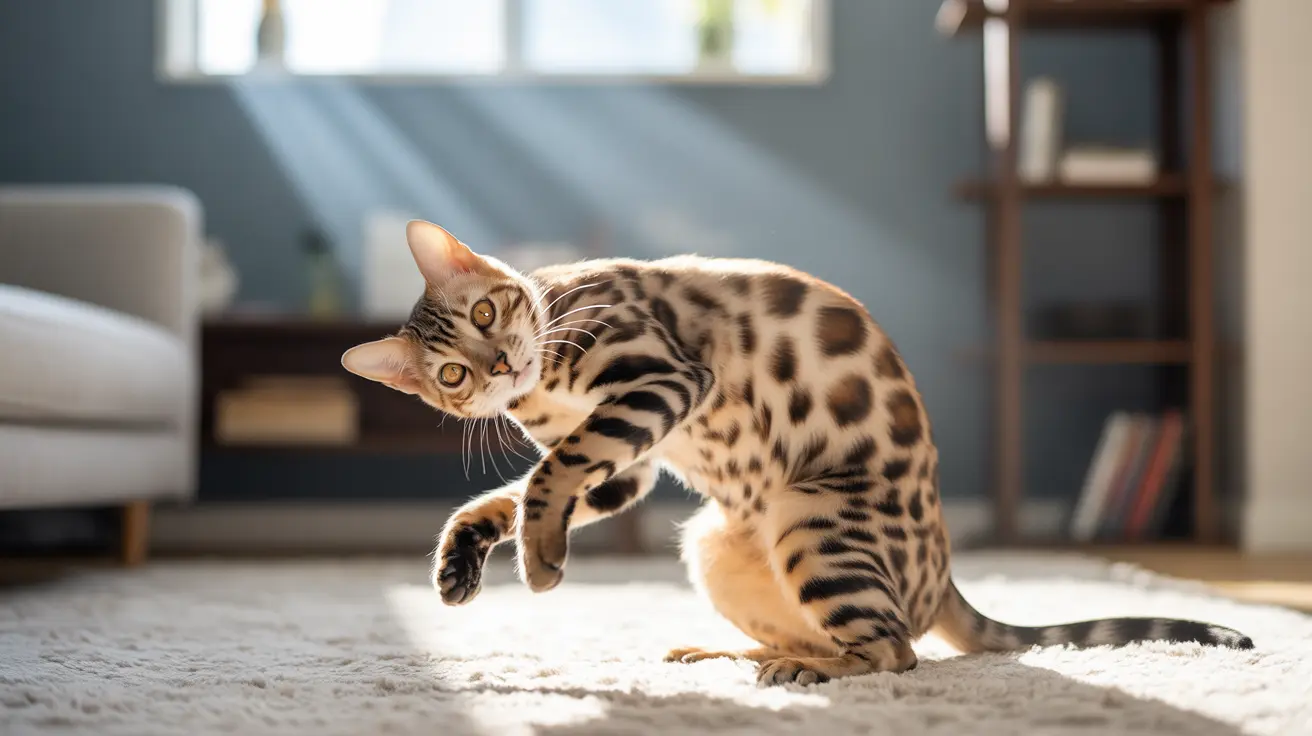The Anatomy Behind the Arch
Cats possess remarkable spinal flexibility thanks to their unique anatomical structure. With approximately 60 vertebrae (compared to humans' 34), cats can achieve the dramatic arching motion we're all familiar with. Their highly flexible spine, combined with specialized muscles and ligaments, allows for this distinctive movement that serves multiple purposes in their daily lives.
Common Reasons for Back Arching
Defensive Posturing
When cats feel threatened or startled, they may arch their backs while puffing up their fur (piloerection) to appear larger and more intimidating. This defensive posture, often accompanied by hissing and flattened ears, is an evolutionary tactic designed to ward off potential threats.
Stretching and Physical Maintenance
One of the most common and benign reasons for back arching is simple stretching. Cats often arch their backs after waking up from a nap or during their regular stretching routines. This helps improve blood circulation, maintain flexibility, and keep their muscles limber.
Social Interaction and Play
Cats may arch their backs during playful encounters, especially kittens engaging in social play. This behavior can be accompanied by sideways hopping or playful running, indicating excitement and invitation to interact rather than aggression.
Reading Your Cat's Body Language
To accurately interpret why your cat is arching its back, it's essential to observe other body language cues:
- Relaxed tail and purring: Usually indicates contentment or stretching
- Puffed fur and hissing: Signs of fear or aggression
- Side-to-side movement with an arched back: Could indicate playfulness
- Slow, deliberate arching while being petted: Often shows pleasure
Health and Wellness Considerations
While back arching is typically normal behavior, sudden changes in this behavior or frequent arching accompanied by signs of discomfort could indicate health issues. Monitor your cat for additional symptoms like:
- Reluctance to move or jump
- Vocalization during movement
- Changes in appetite or behavior
- Sensitivity to touch along the spine
Frequently Asked Questions
Why do cats arch their backs when they are scared or threatened?
Cats arch their backs when scared or threatened to make themselves appear larger and more intimidating to potential threats. This instinctive behavior, combined with raised fur and hissing, is a defensive mechanism designed to deter attackers.
How can I tell if my cat is arching its back out of playfulness or aggression?
Look at other body language cues: playful arching is usually accompanied by sideways hopping, a relaxed tail, and forward-pointing ears. Aggressive arching typically involves flattened ears, hissing, and puffed-up fur.
What does it mean when my cat arches its back while being petted?
When a cat arches its back during petting, it's usually a sign of pleasure and contentment. This behavior often accompanies purring and is your cat's way of engaging positively with the physical contact.
Is arching the back a sign of pain or discomfort in cats?
While normal back arching is common, frequent or unusual arching accompanied by other signs of discomfort could indicate pain or health issues. Consult a veterinarian if you notice concerning changes in this behavior.
Why do cats arch their backs when they stretch after sleeping?
Cats arch their backs after sleeping as part of their natural stretching routine. This helps improve blood circulation, maintain flexibility, and prepare their muscles for activity after periods of rest.
Conclusion
Back arching is a complex behavior that serves multiple purposes in feline communication and physical well-being. By understanding the context and accompanying body language, you can better interpret your cat's needs and emotions, leading to stronger bonds and better care for your feline companion.






